The Cincinnati Bengals are a professional American football team based in Cincinnati. The Bengals compete in the National Football League as a member club of the league's American Football Conference North division. The club's home games are held in downtown Cincinnati at Paycor Stadium.
Former Cleveland Browns head coach Paul Brown began planning for the creation of the Bengals franchise in 1965, and Cincinnati's city council approved the construction of Riverfront Stadium in 1966. Finally, in 1967, the Bengals were founded when a group headed by Brown received franchise approval by the American Football League on May 23, 1967, and they began play in the 1968 season. Brown was the Bengals' head coach from their inception to. After being dismissed as the Browns' head coach by Art Modell in January Brown had shown interest in establishing another NFL franchise in Ohio and looked at both Cincinnati and Columbus. He ultimately chose the former when a deal between the city, Hamilton County, and Major League Baseball's Cincinnati Reds was struck that resulted in an agreement to build a multipurpose stadium which could host both baseball and football games. Due to the impending merger of the AFL and the NFL, which was scheduled to take full effect in the season, Brown agreed to join the AFL as its 10th and final franchise. The Bengals, like the other former AFL teams, were assigned to the AFC following the merger. Cincinnati was also selected because, like their neighbors the Reds, they could draw from several large neighboring cities that are all no more than away from downtown Cincinnati, along with Indianapolis, until the Baltimore Colts relocated there prior to the 1984 NFL season. After Paul Brown's death in 1991, controlling interest in the team was inherited by his son, Mike Brown. In 2011, Brown purchased shares of the team owned by the estate of co-founder Austin Knowlton and is now the majority owner of the Bengals franchise.
The Bengals won the AFC championship in and. After the first two conference championships, they lost to the San Francisco 49ers in Super Bowls XVI and XXIII. The 1990s and the early 2000s were a period of great struggle. During that era they were occasionally referred to as "The Bungles," a term coined by Steelers broadcaster Myron Cope, due to their struggles and poor performance. Following the 1990 season, the team went 14 years without posting a winning record, nor qualifying to play in the NFL playoffs. The Bengals had several head coaches, and several of their top draft picks did not pan out. The team does not have an official general manager; however, owner Mike Brown handles the normal day-to-day operations a general manager would typically handle. In a 2011 survey, Brown was rated as among the worst team owners in American professional sports. The team's fortunes improved in the mid-2000s and they continued up until the mid-2010s, which saw them become more consistent postseason contenders, but they continued to struggle past the regular season. The turning point for the Bengals was during the 2021 season, when they won their first playoff game in 31 years and advanced to Super Bowl LVI, their first appearance in the Super Bowl in 33 years, where they lost to the Los Angeles Rams.
Franchise history
Brown family era
In 1967, an ownership group led by Paul Brown was granted a franchise in the American Football League. Brown named the team the Bengals in order "to give it a link with past professional football in Cincinnati". Another Cincinnati Bengals team had existed in the city and played in three previous American Football Leagues from 1937 to 1942. The city's world-renowned zoo was also home to a rare white Bengal tiger.
In a possible insult to Art Modell – or possibly as a homage to the Massillon Tigers – Brown chose the exact shade of orange used by his former team. He added black as the secondary color. Brown chose a very simple logo: the word "BENGALS" in black lettering. One of the potential helmet designs Brown rejected was a striped motif that was similar to the helmets adopted by the team in 1981 still in use today; however, that design featured yellow stripes on a turquoise helmet which were more uniform in width. The Bengals began play in the 1968 season.
In 1966, the American Football League agreed to a merger with its older and more established rival, the National Football League. Among the terms of the merger was that the AFL was permitted to add one additional franchise; the NFL wanted an even number of clubs in the merged league, so a team needed to be added to bring the number of clubs in the merged league to 26 teams.
For the AFL, a key motive behind their agreement to accept a new team was that the guarantee of an eventual place in the NFL meant the league could charge a steep expansion fee of $10 million – 400 times the $25,000 the original eight owners paid when they founded the league in 1960. The cash from the new team provided the American Football League with the funds needed to pay the indemnities required to be paid by the AFL to the NFL, as stipulated by the merger agreement.
Prior to the merger's announcement, Brown had not seriously considered joining the American Football League and was not a supporter of what he openly regarded to be an inferior competition, once famously stating that "I didn't pay ten million dollars to be in the AFL." However, with the announcement of the merger, Brown realized that the AFL expansion franchise would likely be his only realistic path back into the NFL in the short to medium term, and ultimately acquiesced to joining the AFL after learning that the team was guaranteed to become an NFL franchise after the merger was completed in 1970.
There was also a major problem: Major League Baseball's Cincinnati Reds were in need of a facility to replace Crosley Field, which they had used since 1912. By this time, the small park was antiquated and rundown, and parking issues had plagued the city since the early 1950s, while the park also lacked modern amenities – issues that were exacerbated by the Mill Creek Expressway project that ran alongside the park.
While New York City – which had lost both its National League teams in 1957 after the Dodgers relocated to Los Angeles, and the Giants relocated to San Francisco – had actively courted Reds owner Powel Crosley to relocate his team there, Crosley was adamant that the Reds remain in Cincinnati and tolerated the worsening problems with the Crosley Field location.
With assistance from Ohio governor James A. Rhodes, Hamilton County and the Cincinnati city council agreed to build a single multi-purpose facility on the dilapidated riverfront section of the city: the new facility had to be ready by the opening of the 1970 NFL season, and was officially named Riverfront Stadium.
With the completion of the merger in 1970, the Cleveland Browns were one of three NFL teams that agreed to move to the AFL-based American Football Conference to give both conferences an equal number of teams and were placed in the AFC Central, the same division as the Bengals. An instant rivalry was born, fueled initially by Paul Brown's rivalry with Art Modell.
Paul Brown and Bill Johnson years
For their first two seasons, the Bengals played at Nippert Stadium, the current home of the University of Cincinnati Bearcats. The team held training camp at Wilmington College in Wilmington, through the 1968 preseason. The team finished its first season with a 3–11 record and running back Paul Robinson, who rushed for 1,023 yards, and was named the AFL Rookie of the Year.
Founder Paul Brown coached the team for its first eight seasons. One of Brown's college draft strategies was to draft players with above-average intelligence. Punter/wide receiver Pat McInally attended Harvard University, and linebacker Reggie Williams attended Dartmouth College and served on Cincinnati city council while on the Bengals' roster. Because of this policy, many former players were highly articulate and went on to have successful careers in commentary and broadcasting as well as the arts. In addition, Brown had a knack for locating and recognizing pro football talent in unusual places.
In 1970, the Bengals moved to play at Riverfront Stadium, a home they shared with the Cincinnati Reds until the team moved to Paul Brown Stadium in 2000. Notable players of the 1970 team included Virgil Carter, Chip Meyers, Jack Meckstroth, Bob Trumpy, and Lemar Parrish. Virgil Carter threw for 1,647 yards. Chip Myers paced all receivers, catching 32 passes for 542 yards. Bob Trumpy contributed to the receiving game, too. The team reached the playoffs three times during that decade, but could not win any of those postseason games. In 1975, the team posted an 11–3 record, giving them what is to this day the highest winning percentage in franchise history. But it only earned them a wild card spot in the playoffs, behind the 12–2 Pittsburgh Steelers, who went on to win the Super Bowl; the Bengals lost to the Oakland Raiders 31–28 in the divisional playoffs.
Forrest Gregg/Sam Wyche years
The Bengals reached the Super Bowl twice during the 1980s – in Super Bowl XVI and Super Bowl XXIII – but lost both times to the San Francisco 49ers. The team appeared in the playoffs in 1990, making it to the second round before losing to the Los Angeles Raiders.
Before the following season got underway, Paul Brown died at age 82. Due to declining health, he had already transferred control to his son, Mike Brown, but was reported to still influence the daily operations of the team. The Bengals' fortunes changed for the worse as the team posted 14 consecutive non-winning seasons and were saddled with numerous draft busts.
Marvin Lewis years
The Bengals began to emerge from that dismal period into a new era of increased consistency, however, after the team finished with its worst record in history, 2–14, which led to the hiring of Marvin Lewis as head coach in 2003…
Eye-catching new design Cincinnati Bengals clothing will be the perfect gift for Cincinnati Bengals fans. Clothing on printed with unique and fancy designs, limited number of products.
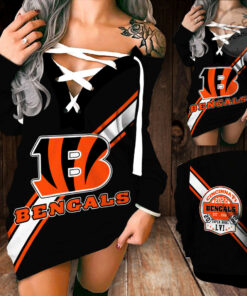
Cincinnati Bengals Shoulder Deep V-Neck Lace Up Long Sleeve Pullover 3D
$45.95 – $45.98
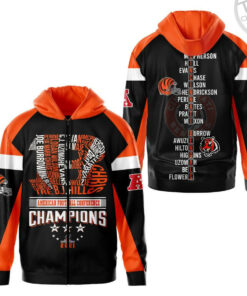
Cincinnati Bengals S3 Zip-up Hoodie, Sweatshirt, Hoodie, T-shirt 3D
$29.95 – $49.95
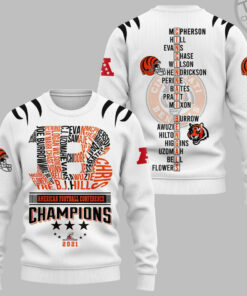
Cincinnati Bengals S2 Sweatshirt, Hoodie, Zip-up Hoodie, T-shirt 3D
$29.95 – $49.95
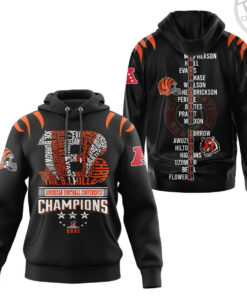
Cincinnati Bengals S1 Hoodie, Zip-up Hoodie, T-shirt, Sweatshirt 3D
$29.95 – $49.95
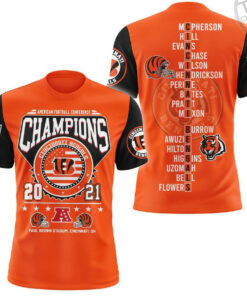
Cincinnati Bengals Champions T-shirt, Sweatshirt, Hoodie, Zip-up Hoodie 3D
$29.95 – $49.95
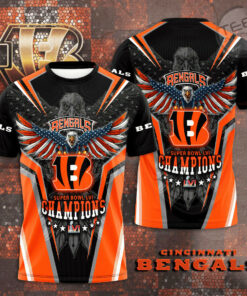
Cincinnati Bengals Super Bowl T-shirt, Sweatshirt, Hoodie, Zip-up Hoodie 3D
$29.95 – $49.95
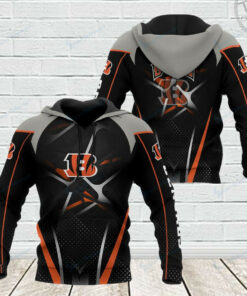
Cincinnati Bengals Hoodie, Zip-up Hoodie 3D
$45.95 – $49.95
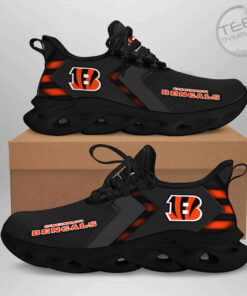
Cincinnati Bengals sneaker
$85.95 – $85.98
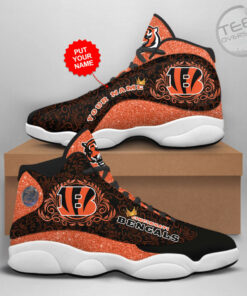
Best Sellers Cincinnati Bengals Shoes
$89.95 – $89.98
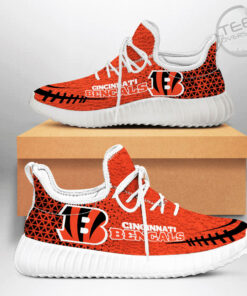
Best Sellers Cincinnati Bengals designer shoes
$85.95 – $85.98
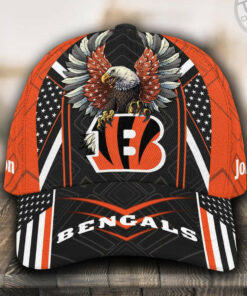
Cincinnati Bengals Cap – Custom Hat 3D
$29.95 – $29.98
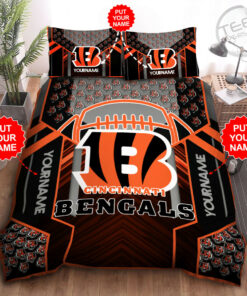
Cincinnati Bengals bedding set 3D
$55.95 – $77.95
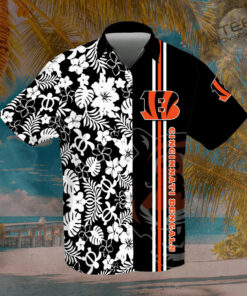
Cincinnati Bengals Hawaiian Shirt, Hawaiian Shorts 3D
$42.95 – $43.95
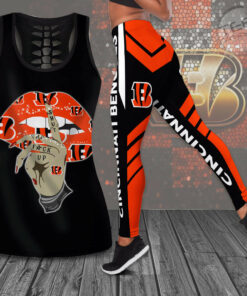
Cincinnati Bengals Hollow Tank Top, Leggings 3D
$76.95 – $78.98
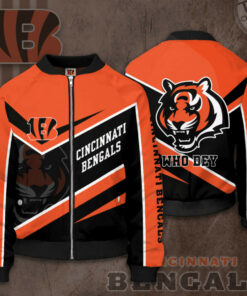
Cincinnati Bengals Bomber Jacket 3D
$59.95 – $59.98
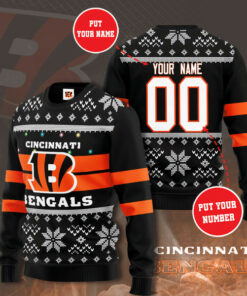
Cincinnati Bengals sweater 3D
$45.95 – $48.95
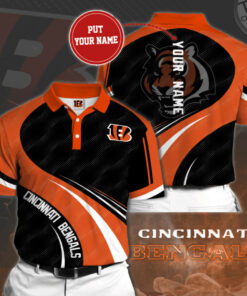
Cincinnati Bengals Polo 3D
$41.95 – $41.98

Cincinnati Bengals Short Sleeve Dress Shirt 3D
$35.95 – $35.98
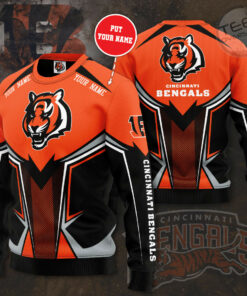
Cincinnati Bengals Sweatshirt 3D
$41.95 – $44.95
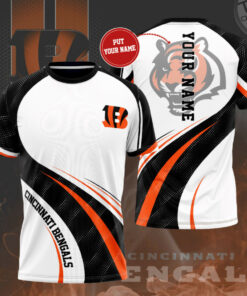
Cincinnati Bengals T-shirt 3D
$29.95 – $29.98
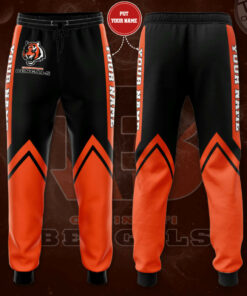
Best Sellers Cincinnati Bengals Sweatpant 3D
$45.95 – $45.98
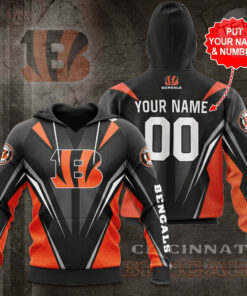
Best Sellers Cincinnati Bengals hoodie 3D
$45.95 – $45.98
Former Cleveland Browns head coach Paul Brown began planning for the creation of the Bengals franchise in 1965, and Cincinnati's city council approved the construction of Riverfront Stadium in 1966. Finally, in 1967, the Bengals were founded when a group headed by Brown received franchise approval by the American Football League on May 23, 1967, and they began play in the 1968 season. Brown was the Bengals' head coach from their inception to. After being dismissed as the Browns' head coach by Art Modell in January Brown had shown interest in establishing another NFL franchise in Ohio and looked at both Cincinnati and Columbus. He ultimately chose the former when a deal between the city, Hamilton County, and Major League Baseball's Cincinnati Reds was struck that resulted in an agreement to build a multipurpose stadium which could host both baseball and football games. Due to the impending merger of the AFL and the NFL, which was scheduled to take full effect in the season, Brown agreed to join the AFL as its 10th and final franchise. The Bengals, like the other former AFL teams, were assigned to the AFC following the merger. Cincinnati was also selected because, like their neighbors the Reds, they could draw from several large neighboring cities that are all no more than away from downtown Cincinnati, along with Indianapolis, until the Baltimore Colts relocated there prior to the 1984 NFL season. After Paul Brown's death in 1991, controlling interest in the team was inherited by his son, Mike Brown. In 2011, Brown purchased shares of the team owned by the estate of co-founder Austin Knowlton and is now the majority owner of the Bengals franchise.
The Bengals won the AFC championship in and. After the first two conference championships, they lost to the San Francisco 49ers in Super Bowls XVI and XXIII. The 1990s and the early 2000s were a period of great struggle. During that era they were occasionally referred to as "The Bungles," a term coined by Steelers broadcaster Myron Cope, due to their struggles and poor performance. Following the 1990 season, the team went 14 years without posting a winning record, nor qualifying to play in the NFL playoffs. The Bengals had several head coaches, and several of their top draft picks did not pan out. The team does not have an official general manager; however, owner Mike Brown handles the normal day-to-day operations a general manager would typically handle. In a 2011 survey, Brown was rated as among the worst team owners in American professional sports. The team's fortunes improved in the mid-2000s and they continued up until the mid-2010s, which saw them become more consistent postseason contenders, but they continued to struggle past the regular season. The turning point for the Bengals was during the 2021 season, when they won their first playoff game in 31 years and advanced to Super Bowl LVI, their first appearance in the Super Bowl in 33 years, where they lost to the Los Angeles Rams.
Franchise history
Brown family era
In 1967, an ownership group led by Paul Brown was granted a franchise in the American Football League. Brown named the team the Bengals in order "to give it a link with past professional football in Cincinnati". Another Cincinnati Bengals team had existed in the city and played in three previous American Football Leagues from 1937 to 1942. The city's world-renowned zoo was also home to a rare white Bengal tiger.
In a possible insult to Art Modell – or possibly as a homage to the Massillon Tigers – Brown chose the exact shade of orange used by his former team. He added black as the secondary color. Brown chose a very simple logo: the word "BENGALS" in black lettering. One of the potential helmet designs Brown rejected was a striped motif that was similar to the helmets adopted by the team in 1981 still in use today; however, that design featured yellow stripes on a turquoise helmet which were more uniform in width. The Bengals began play in the 1968 season.
In 1966, the American Football League agreed to a merger with its older and more established rival, the National Football League. Among the terms of the merger was that the AFL was permitted to add one additional franchise; the NFL wanted an even number of clubs in the merged league, so a team needed to be added to bring the number of clubs in the merged league to 26 teams.
For the AFL, a key motive behind their agreement to accept a new team was that the guarantee of an eventual place in the NFL meant the league could charge a steep expansion fee of $10 million – 400 times the $25,000 the original eight owners paid when they founded the league in 1960. The cash from the new team provided the American Football League with the funds needed to pay the indemnities required to be paid by the AFL to the NFL, as stipulated by the merger agreement.
Prior to the merger's announcement, Brown had not seriously considered joining the American Football League and was not a supporter of what he openly regarded to be an inferior competition, once famously stating that "I didn't pay ten million dollars to be in the AFL." However, with the announcement of the merger, Brown realized that the AFL expansion franchise would likely be his only realistic path back into the NFL in the short to medium term, and ultimately acquiesced to joining the AFL after learning that the team was guaranteed to become an NFL franchise after the merger was completed in 1970.
There was also a major problem: Major League Baseball's Cincinnati Reds were in need of a facility to replace Crosley Field, which they had used since 1912. By this time, the small park was antiquated and rundown, and parking issues had plagued the city since the early 1950s, while the park also lacked modern amenities – issues that were exacerbated by the Mill Creek Expressway project that ran alongside the park.
While New York City – which had lost both its National League teams in 1957 after the Dodgers relocated to Los Angeles, and the Giants relocated to San Francisco – had actively courted Reds owner Powel Crosley to relocate his team there, Crosley was adamant that the Reds remain in Cincinnati and tolerated the worsening problems with the Crosley Field location.
With assistance from Ohio governor James A. Rhodes, Hamilton County and the Cincinnati city council agreed to build a single multi-purpose facility on the dilapidated riverfront section of the city: the new facility had to be ready by the opening of the 1970 NFL season, and was officially named Riverfront Stadium.
With the completion of the merger in 1970, the Cleveland Browns were one of three NFL teams that agreed to move to the AFL-based American Football Conference to give both conferences an equal number of teams and were placed in the AFC Central, the same division as the Bengals. An instant rivalry was born, fueled initially by Paul Brown's rivalry with Art Modell.
Paul Brown and Bill Johnson years
For their first two seasons, the Bengals played at Nippert Stadium, the current home of the University of Cincinnati Bearcats. The team held training camp at Wilmington College in Wilmington, through the 1968 preseason. The team finished its first season with a 3–11 record and running back Paul Robinson, who rushed for 1,023 yards, and was named the AFL Rookie of the Year.
Founder Paul Brown coached the team for its first eight seasons. One of Brown's college draft strategies was to draft players with above-average intelligence. Punter/wide receiver Pat McInally attended Harvard University, and linebacker Reggie Williams attended Dartmouth College and served on Cincinnati city council while on the Bengals' roster. Because of this policy, many former players were highly articulate and went on to have successful careers in commentary and broadcasting as well as the arts. In addition, Brown had a knack for locating and recognizing pro football talent in unusual places.
In 1970, the Bengals moved to play at Riverfront Stadium, a home they shared with the Cincinnati Reds until the team moved to Paul Brown Stadium in 2000. Notable players of the 1970 team included Virgil Carter, Chip Meyers, Jack Meckstroth, Bob Trumpy, and Lemar Parrish. Virgil Carter threw for 1,647 yards. Chip Myers paced all receivers, catching 32 passes for 542 yards. Bob Trumpy contributed to the receiving game, too. The team reached the playoffs three times during that decade, but could not win any of those postseason games. In 1975, the team posted an 11–3 record, giving them what is to this day the highest winning percentage in franchise history. But it only earned them a wild card spot in the playoffs, behind the 12–2 Pittsburgh Steelers, who went on to win the Super Bowl; the Bengals lost to the Oakland Raiders 31–28 in the divisional playoffs.
Forrest Gregg/Sam Wyche years
The Bengals reached the Super Bowl twice during the 1980s – in Super Bowl XVI and Super Bowl XXIII – but lost both times to the San Francisco 49ers. The team appeared in the playoffs in 1990, making it to the second round before losing to the Los Angeles Raiders.
Before the following season got underway, Paul Brown died at age 82. Due to declining health, he had already transferred control to his son, Mike Brown, but was reported to still influence the daily operations of the team. The Bengals' fortunes changed for the worse as the team posted 14 consecutive non-winning seasons and were saddled with numerous draft busts.
Marvin Lewis years
The Bengals began to emerge from that dismal period into a new era of increased consistency, however, after the team finished with its worst record in history, 2–14, which led to the hiring of Marvin Lewis as head coach in 2003…
Eye-catching new design Cincinnati Bengals clothing will be the perfect gift for Cincinnati Bengals fans. Clothing on printed with unique and fancy designs, limited number of products.

Cincinnati Bengals Shoulder Deep V-Neck Lace Up Long Sleeve Pullover 3D
$45.95 – $45.98

Cincinnati Bengals S3 Zip-up Hoodie, Sweatshirt, Hoodie, T-shirt 3D
$29.95 – $49.95

Cincinnati Bengals S2 Sweatshirt, Hoodie, Zip-up Hoodie, T-shirt 3D
$29.95 – $49.95

Cincinnati Bengals S1 Hoodie, Zip-up Hoodie, T-shirt, Sweatshirt 3D
$29.95 – $49.95

Cincinnati Bengals Champions T-shirt, Sweatshirt, Hoodie, Zip-up Hoodie 3D
$29.95 – $49.95

Cincinnati Bengals Super Bowl T-shirt, Sweatshirt, Hoodie, Zip-up Hoodie 3D
$29.95 – $49.95

Cincinnati Bengals Hoodie, Zip-up Hoodie 3D
$45.95 – $49.95

Cincinnati Bengals sneaker
$85.95 – $85.98

Best Sellers Cincinnati Bengals Shoes
$89.95 – $89.98

Best Sellers Cincinnati Bengals designer shoes
$85.95 – $85.98

Cincinnati Bengals Cap – Custom Hat 3D
$29.95 – $29.98

Cincinnati Bengals bedding set 3D
$55.95 – $77.95

Cincinnati Bengals Hawaiian Shirt, Hawaiian Shorts 3D
$42.95 – $43.95

Cincinnati Bengals Hollow Tank Top, Leggings 3D
$76.95 – $78.98

Cincinnati Bengals Bomber Jacket 3D
$59.95 – $59.98

Cincinnati Bengals sweater 3D
$45.95 – $48.95

Cincinnati Bengals Polo 3D
$41.95 – $41.98

Cincinnati Bengals Short Sleeve Dress Shirt 3D
$35.95 – $35.98

Cincinnati Bengals Sweatshirt 3D
$41.95 – $44.95

Cincinnati Bengals T-shirt 3D
$29.95 – $29.98

Best Sellers Cincinnati Bengals Sweatpant 3D
$45.95 – $45.98

Best Sellers Cincinnati Bengals hoodie 3D
$45.95 – $45.98
Nhận xét
Đăng nhận xét